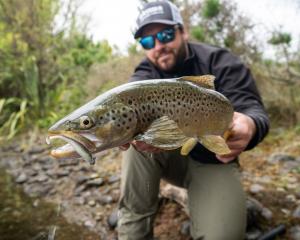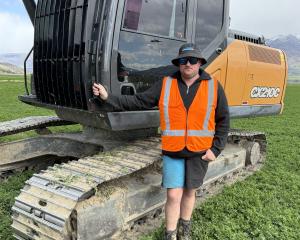A retired fishing guide is proposing a new way of allocating fishing licences.
Ken Cochrane put his idea to divide fishing licences into three separate groups before the Otago Fish and Game Council this week.
At present in New Zealand, except for the Taupo region, any full-season licence-holder is entitled to fish for eight months of the year in most river fisheries and 12 months in all other fisheries.
The cost for that is $96 and Mr Cochrane said while some would argue that was cheap, there were others who saw it as very expensive.
His idea is to have three separate licences - one for New Zealand resident anglers, one for guided nonresident anglers and one for unguided non-resident anglers.
He proposed the New Zealand licence should stay the same, with guided non-residents' licences being housed within an annual licence fee paid by each guide holding a guides licence. The money would be paid by the guides up front in October.
The unguided non-resident group would have to buy a $96 annual licence but it would only be valid for one week. That licence could be handed in and another one obtained for a week at the cost of another year's licence.
That would restrict unguided non-residents to just two weeks fishing during their stay.
A study carried out by Niwa and the Cawthron Institute showed although New Zealanders were avid fishers, they only managed an average of 16 fishing days a year while still paying for their full licence.
‘‘In numbers they are many but the pressure is little,'' Mr Cochrane said.
Guided non-resident anglers put significant pressure on the fishery as a volume, but it was dispersed and spread by the whole season.
‘‘The volume of pressure is controlled by the cost of guiding and is a trade-off to people's livelihoods and New Zealand's tourism marketing machine,'' he said.
‘‘Unguided non-resident anglers are a free-loader group on the fishery. This group is the untethered rape and pillage anglers that offer little to this country. Mostly, they spend nothing on transport, food and accommodation.
"They buy $500 cars and push deep into the back country rivers and are most likely to be where you want to fish. They tend to stay for long periods of time, and generally fish as many days as they can.
"We leave them to their own devices for eight months a year, and for $96 they can have the ‘life of Riley' with our fishery.''












